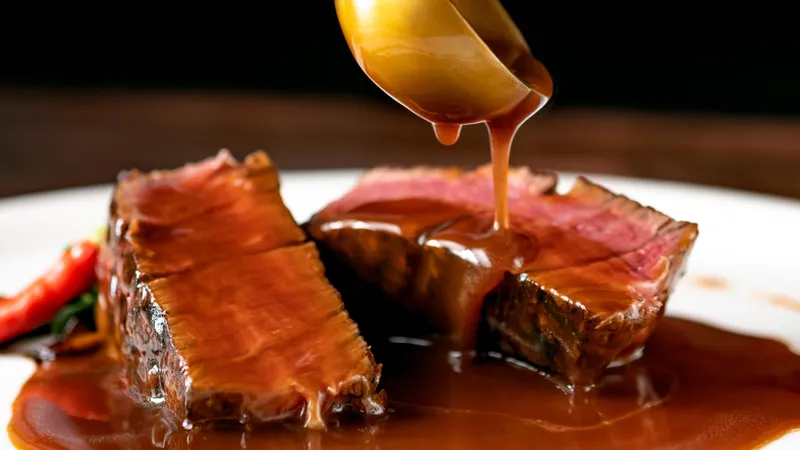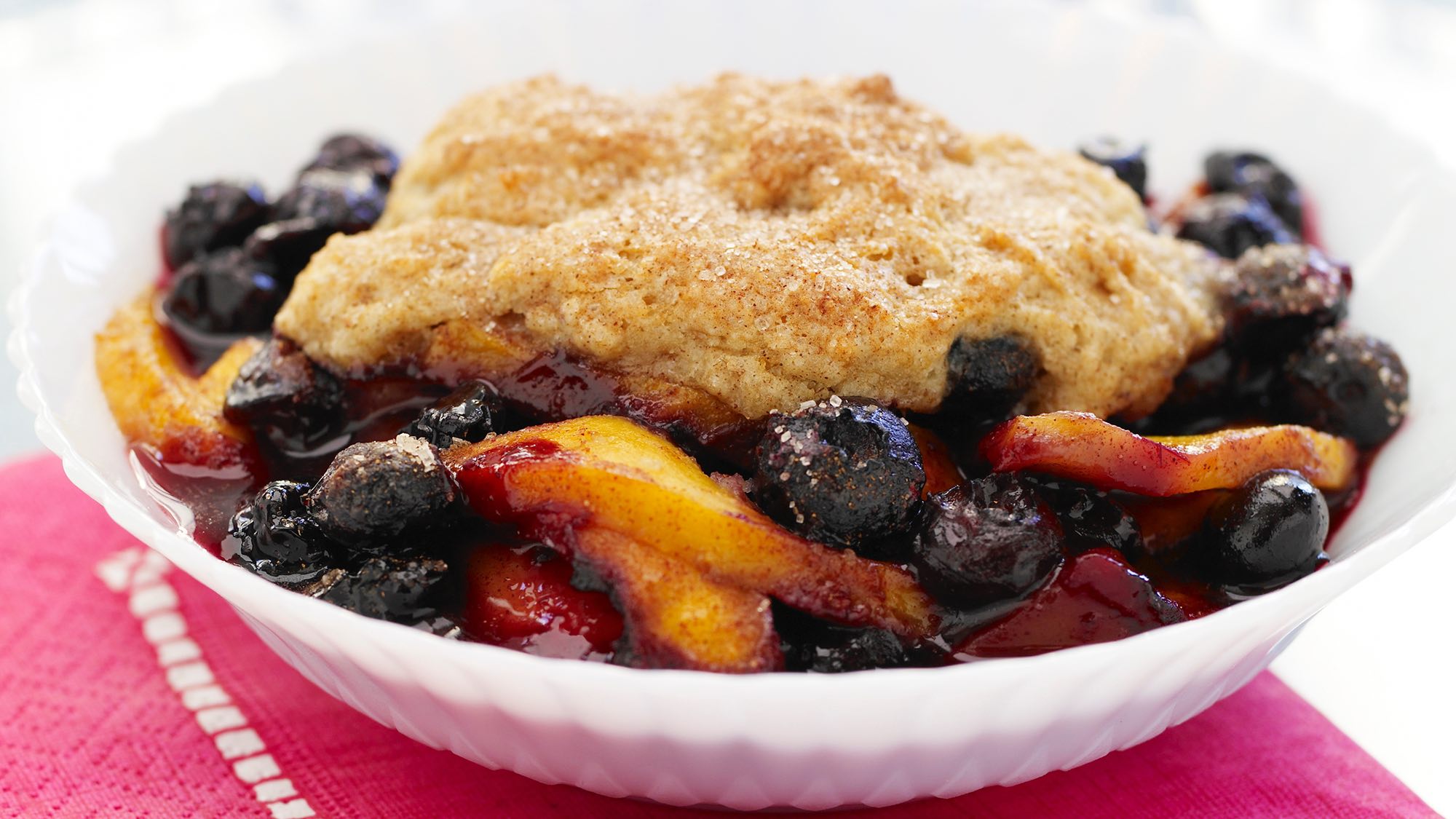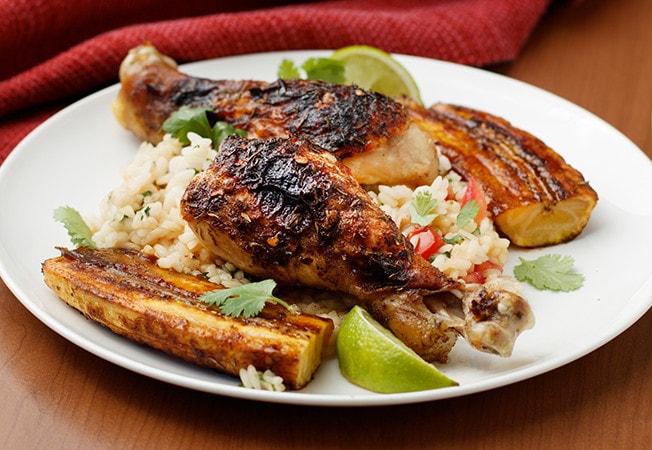A good sauce is key to an exceptional meal. It can save a bland dish, moisten dry meats, or star as the main event (creamy mac and cheese, full stop). Having a few simple sauces up your sleeve and on your meals is a great way to upgrade your average weekly dinners. You just have to know where to start.
Avail yourself of the five basic sauces known as “the mother sauces.” These baseline recipes allow you to riff indefinitely, and create well-matched sauces for any flavor profile. Each sauce only requires a few ingredients, and the method is nearly the same every time. Once you’ve mastered the basics, you’ll be ready to put your own spin on sauce, for meals that make you say “That’s mother.”
Béchamel
The first time ate béchamel was after making a hundred ham and cheese croissants slathered in the stuff. It looked so darn pasty, I wondered how it could possibly improve anything. Then I sampled the breakfast sandwich and became utterly bewitched with béchamel.
Béchamel is a simple, creamy, white sauce with a light, savory flavor. Four out of five of these mother sauces begin with a roux, and this is one of them. (Read here to refresh your roux technique.) Since this is a white sauce, the fat and flour don’t need to brown or develop a deep flavor. For about 2 cups of béchamel, use 2 tablespoons of butter, 3 tablespoons of flour, and 2 cups of milk. Stir the butter and flour in a saucepan for a couple minutes to cook the flour, then add warm, whole milk. Whisk until smooth and thickened. Stir in a pinch of nutmeg, and I always add a dash of salt because I can’t be stopped. You can use milk with lower fat percentages, or non-dairy milk, but the texture will suffer, so consider yourself warned.
You can slather béchamel onto sandwiches, layer into veggie lasagnas, substitute it in for red sauce and make a pizza bianca, or spoon onto a baked potato. Add cheese and you’ve got the perfect base for a mac and cheese that will make you want to leave all this and run away to live in a cottage, just you and mac and cheese forever. I like to add chopped onion to the earliest stage of my blonde roux, and make a lazy version of soubise.
Velouté
It’s possible Thanksgiving has already familiarized you with velouté. This roux-based sauce starts out the same way as béchamel – with a roux. Instead of adding milk, you whisk in a light-colored stock, like chicken, veal, fish, vegetable, or turkey. For those who don’t enjoy turkey gravy thickened with cornstarch, you might consider a turkey velouté in November.
For about two cups of velouté use the same measurements as béchamel and substitute stock for the milk measurement. Add the flour and fat (ghee works well) to a saucepan. You can take the mixture a little darker this time, but not too dark. Save that for later. Cooking the roux eliminates the pasty flour taste and intensifies the color, while the flavor becomes more toasted and complex. Cook it until it’s golden, or a tinge brown, then whisk in hot or warm stock. Heating up the liquid first makes incorporation easier, as the fat doesn’t seize up and form clumps. Drizzle over meats, vegetables, or casseroles. For extra credit, flavor your velouté with chopped herbs or spices.
Espagnole
If a velouté isn’t bold enough for you, espagnole is the intensified roux-based sauce you might be searching for. It’s also called “brown sauce” (“espagnole” certainly has more panache, but you pick), and is made with a dark roux, and a dark stock, like beef or veal stock. It takes an extra five to ten minutes to give the flour a deeply toasted, rich chestnut color, but it’s worth it. Use ghee or clarified butter to avoid any bitter flavors from the milk solids possibly burning. Aside from the richer roux, espagnole sauce gets a bigger boost of flavor from other fun ingredients like tomato purée, a mirepoix, white wine, and a bouquet garni of parsley, thyme and bayleaf, which add sweet, earthy, and savory flavors and aroma.
Using the same roux measurements as our other two sauces, you’ll chop a 1/4 cup each of carrots, celery, and onion for your mirepoix. Add butter to a saucepan and add the mirepoix. Sweat the vegetables until softened and translucent. Add the flour and cook until the roux becomes deeply browned. This will look like a clumpy mess, that’s okay, it will sort out later. Whisk in 2 tablespoons of tomato paste or 1 cup of puréed tomato. Add 1/2 cup of white wine and slowly add 3 cups of warmed, brown stock and whisk. Add the bouquet garni. (This can be three or four sprigs each of thyme and parsley, and a bay leaf, but it’s open to adjustment.) Simmer for 30–40 minutes to thicken slightly. Strain the sauce. Drizzle over roasted meats, or serve alongside a hot sandwich as a dip. More ingredients lend well to more spin-off sauces, but the most common is a demi-glace which is espagnole cooked down. Simply return the finished sauce to a pot to further intensify and thicken. Expand on the basic espagnole with other vegetables like mushrooms, or shallots, and get sassy with spices like dry mustard or cumin. You can even mix up the booze component and switch out white wine for red, try brandy, or maybe sherry.
Tomato
Photo by Dennis Klein
Turns out there’s more than one way to sauce a tomato. Italian style tomato sauce is a staple, but try the French style and enjoy a velvety consistency and earthy flavors. Between you and me, I think espagnole is really a grandmother sauce, because this mama here is basically espagnole with the addition of salt-cured pork and a pile of tomatoes. Salt-cured pork gets added to the butter to cook down, and this simple step dramatically changes the sauce by adding salt and umami.
Besides preparing 1/3 cup of chopped salt-cured pork – like bacon, pancetta, or lardons – and opening two 28-ounce cans of crushed tomatoes, all of the other measurements (for the mirepoix, roux, stock, and bouquet) stay the same as the espagnole recipe above. Melt two tablespoons of butter in a pot and add the chopped salt-cured pork, like bacon, pancetta, or lardons. Cook until the pork has shed its fat and has developed a golden brown color. Add the mirepoix and cook until softened. Add the flour and cook until you have a medium brown roux. Add the brown stock, crushed tomatoes and bouquet garni of herbs. Put the sauce into the oven and allow it to cook down slowly, about an hour to 90 minutes, until thick. Pull out the bouquet garni and blend the sauce until smooth. Serve with pasta or meats. This sauce can add a subtle twist to classic Italian dishes that use red sauce. Tweak your sauce tomate with ingredients like garlic, bell peppers, or olive oil.
Hollandaise
We’ve come to it. The mother sauce that doesn’t bother with a roux for thickening. Hollandaise is the silky, rich, and tangy sauce that drapes lovingly over your eggs benedict. Since roux has no business here, hollandaise is thickened with egg yolks. Its primary ingredients are butter, lemon juice, and egg yolks, making it similar to another famous sauce: mayonnaise.
Hollandaise is tricky because it’s an emulsion, and the eggs must be cooked gently. Some recipes add a bit of water to the yolks to loosen them up and give you a little breathing room as the water evaporates. Use a double boiler, or set up a pot with an inch of water to simmer over medium low heat. Use a bowl larger than the top of the pot, and and add 4 egg yolks, 1 tablespoon of water (if using), and 1 tablespoon of lemon juice. Place the bowl on the pot of water and whisk consistently with vigor. Once the heat builds and the eggs begin cooking, you’ll notice the mixture thicken. Remove it from the heat and slowly incorporate 1 stick (8 tablespoons) of just melted, or extremely softened butter, a bit at a time. Season with a dash of salt, pepper, and cayenne. Spoon over eggs, asparagus, chicken, or any blanched vegetable. Riff on your hollandaise by adding chopped herbs, finely chopped shallots, or garlic. For a subtle switch up, swap out the lemon juice for another citrus like orange, lime or grapefruit.
These five mother sauces are a great baseline to start experimenting with the creamy component of your dishes. Trying to remember them all might be a long shot, but generally, you can start with a roux, pick milk or stock, and start getting creative from there.
This article was written by Allie Chanthorn Reinmann from Lifehacker and was legally licensed through the Industry Dive Content Marketplace. Please direct all licensing questions to legal@industrydive.com.









